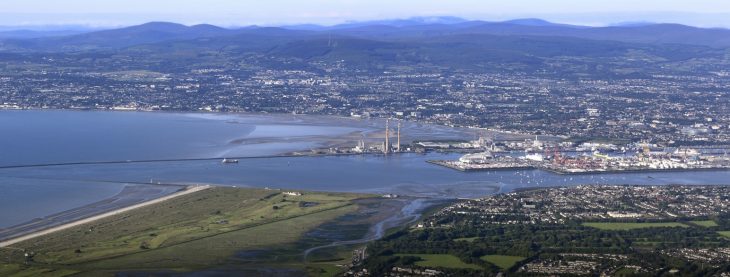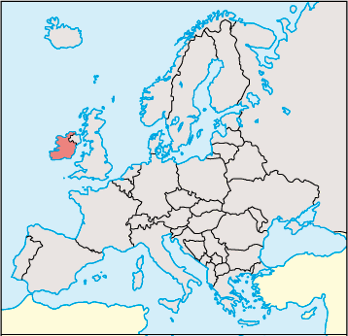What is the Capital of Ireland? Dublin

Capital City of Ireland: Dublin
City Overview
Dublin, the capital of Ireland, is a dynamic and vibrant city located on the eastern coast of the country, along the River Liffey. As Ireland’s largest city and the political, economic, and cultural heart of the country, Dublin boasts a rich history that stretches back over a millennium. Once a Viking settlement, the city has grown into a cosmopolitan hub while retaining much of its historic charm and character.
The origins of Dublin date back to the 9th century, when it was founded by the Vikings as Dubh Linn (meaning “black pool”) at the mouth of the River Liffey. Over the centuries, it evolved into a major center for trade, education, and culture. Today, Dublin is a city where modernity and tradition coexist, evident in its thriving tech industry, vibrant arts scene, and historic landmarks.
Dublin is known for its literary heritage, having been the birthplace of many renowned authors, such as James Joyce, Oscar Wilde, Samuel Beckett, and W.B. Yeats. It also offers a lively nightlife, historic pubs, and numerous festivals, making it an attractive destination for visitors and a hub for cultural exchange.
In addition to its role as Ireland’s political capital, Dublin is a center for business, education, and tourism. It is home to Trinity College, University College Dublin (UCD), and a number of multinational corporations. The city’s economy thrives in areas like information technology, financial services, and pharmaceuticals.
City Facts
- Area: 115 km² (Dublin City)
- Population: Approximately 1.2 million (2023 estimate for the Greater Dublin Area)
- Time Zone: Greenwich Mean Time (GMT, UTC +0) during winter and Irish Standard Time (IST, UTC +1) during summer months.
- Highest Mountain: Lugnaquilla Mountain – At 925 meters (3,035 feet), it is the highest peak in the Wicklow Mountains and can be viewed from parts of Dublin.
- Longest River: River Shannon – The River Shannon is the longest river in Ireland, stretching about 360 kilometers (224 miles) from its source in the Cavan hills to the Atlantic Ocean.
Dublin has a temperate maritime climate, with mild winters and cool summers. Due to its geographical location, it is known for having relatively high levels of rainfall throughout the year, with relatively even temperatures.
Major Landmarks in Dublin
Dublin is a city full of historical and cultural landmarks, many of which are recognized worldwide. These landmarks are central to the city’s identity and are must-visit sites for both tourists and residents alike.
1. Trinity College and the Book of Kells
Founded in 1592, Trinity College is Ireland’s oldest university and one of Dublin’s most famous landmarks. It is home to the Book of Kells, an illuminated manuscript dating back to the 9th century, which is one of the finest examples of medieval Christian artistry. The Long Room in the college’s library is an architectural marvel and houses over 200,000 ancient books.
2. Dublin Castle
Dublin Castle, a historic castle complex at the heart of the city, has played a key role in Irish history for over 800 years. Originally built by the English in the 13th century, it served as the seat of the English (and later British) government in Ireland. Today, Dublin Castle serves as a government complex and is also open to the public, offering tours of its elegant state apartments and medieval undercroft.
3. St. Patrick’s Cathedral
St. Patrick’s Cathedral, founded in 1191, is Dublin’s largest cathedral and one of the most important landmarks in the city. It is dedicated to St. Patrick, the patron saint of Ireland, who is believed to have baptized converts to Christianity at the site. The cathedral’s stunning architecture, stained glass windows, and history make it a must-visit for those interested in Dublin’s religious heritage.
4. The Guinness Storehouse
One of Dublin’s most popular tourist attractions, the Guinness Storehouse tells the story of Guinness beer, which has been brewed in Dublin since 1759. Visitors can learn about the history, brewing process, and legacy of the brand. The tour culminates with a pint of Guinness at the Gravity Bar, which offers panoramic views of the city.
5. Phoenix Park
Covering over 700 hectares, Phoenix Park is one of the largest urban parks in Europe. Located just west of the city center, the park is home to the Dublin Zoo, the Irish President’s Residence (Áras an Uachtaráin), and several monuments and statues. It is a popular spot for picnics, jogging, cycling, and wildlife watching.
6. Temple Bar
The Temple Bar area is Dublin’s cultural quarter, known for its vibrant nightlife, galleries, restaurants, and historic pubs. The area is often bustling with locals and tourists enjoying live music, traditional Irish food, and craft beers. It is also home to the Irish Film Institute and the Gallery of Photography.
Climate Overview
Dublin experiences a temperate maritime climate characterized by mild winters and cool summers. Due to its proximity to the Atlantic Ocean, the city is often subject to moderate weather conditions with relatively high humidity and frequent rainfall throughout the year.
Dublin’s weather is typically cloudy, with the highest rainfall occurring between October and January. Summers are cooler compared to most parts of Europe, with average temperatures rarely exceeding 20°C (68°F).
Monthly Climate Overview
| Month | Average Temperature (°C) | Precipitation (mm) | Sunny Days |
|---|---|---|---|
| January | 5 | 45 | 10 |
| February | 6 | 40 | 10 |
| March | 9 | 45 | 11 |
| April | 10 | 45 | 13 |
| May | 13 | 40 | 17 |
| June | 15 | 50 | 18 |
| July | 17 | 55 | 20 |
| August | 17 | 55 | 18 |
| September | 14 | 65 | 16 |
| October | 10 | 80 | 12 |
| November | 7 | 70 | 9 |
| December | 5 | 60 | 8 |
Other Cities That Have Served as Capital in Ireland’s History
Kilkenny (1126–1171)
In the early years of Ireland’s history, Kilkenny briefly served as the capital. It was an important center of Irish governance and culture. Kilkenny is still known for its historical significance and preserved medieval architecture, including the Kilkenny Castle.
Limerick (1171–1297)
After the Norman invasion, Limerick briefly became a prominent administrative and military center. Today, Limerick is known for its rich history and vibrant culture, but Dublin eventually emerged as the dominant political and economic center.
Country Facts: Ireland
General Country Information
- Population: Approximately 5 million (2023 estimate)
- Area: 70,273 km²
- Largest City: Dublin
- Currency: Euro (EUR)
- Official Languages: Irish (Gaelic) and English
- ISO Country Codes: IE (ISO 3166-1 alpha-2), IRL (ISO 3166-1 alpha-3)
- Government: Parliamentary republic
- Prime Minister: Leo Varadkar (as of 2023)
- Independence: Ireland gained independence from the United Kingdom on December 6, 1922, after the signing of the Anglo-Irish Treaty.
Ireland is a country of natural beauty, rich traditions, and a vibrant cultural scene. From the Cliffs of Moher to the Ring of Kerry, Ireland’s landscapes are breathtaking, and its people are renowned for their warmth and hospitality. With a strong history in literature, politics, and music, Dublin remains a city that blends the old with the new, offering a unique experience for both its residents and visitors.














































